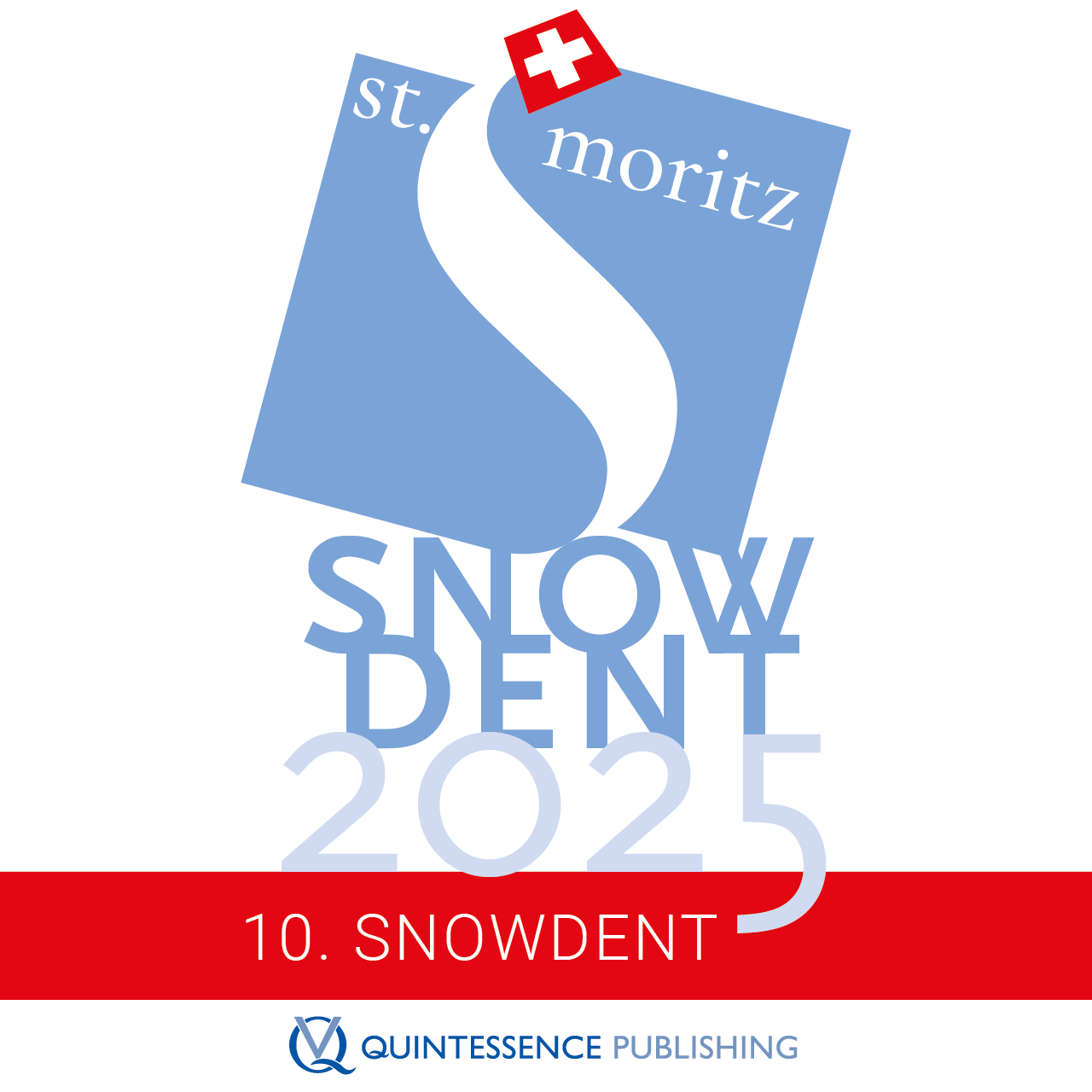Endodontie, 3/2022
Pages 301-307, Language: GermanRechenberg, Dan-Krister / Munir, Amina / Zehnder, MatthiasZielsetzung: Die Untersuchung und Korrelation von drei unterschiedlichen akut schmerzhaften entzündlichen Zuständen endodontischer Ursache und ihrer – anhand des Periapikalen Index-Scores (PAI) bestimmten – Erscheinung im Einzelzahnröntgenbild.
Methodik: Über einen Zeitraum von 15 Monaten wurden am Zentrum für Zahnmedizin der Universität Zürich 368 Patienten mit akuten Zahnschmerzen untersucht, bei denen der Verdacht auf eine endodontisch bedingte Ursache bestand. Davon wurden Fälle (ein Zahn pro Patient) ausgewählt, welche mit starken Schmerzen einhergingen (Numerical Rating Scale-11 [NSR-11] > 6) und eindeutige pulpale/periapikale Diagnosen aufwiesen (n = 162). Die Zähne wurden entsprechend dem klinisch diagnostizierten (Haupt-)Ort des Entzündungsprozesses in drei Gruppen eingeteilt: Ebene 1: Pulpa (positive Reaktion auf den Kältetest), Ebene 2: Parodont (keine Reaktion auf Kälte, ohne Schwellung) und Ebene 3: periapikale Gewebe (keine Reaktion auf Kälte, mit Schwellung). Zur Diagnostik wurden digitale Einzelzahnaufnahmen angefertigt und von zwei kalibrierten Untersuchern beurteilt (PAI). Für die Ebene 2 (n = 76), welche die höchste PAI-Varianz aufwies, wurden die PAI-Werte zusätzlich auf ihre Abhängigkeit von den Faktoren „Zahnlokalisation“ und „Schmerzdauer“ untersucht. Die Daten wurden statistisch mit dem Chi-Quadrat-Test und nichtparametrischen Tests (α = 0,05) ausgewertet.
Ergebnisse: Die bestimmten PAI-Werte korrelierten insgesamt gut mit der klinisch diagnostizierten Hauptlokalisation der Entzündung (Spearman‘s Rho = 0,5131, P < 0,001), wobei die Ebene 1 die mit Abstand niedrigsten PAI-Werte aufwies (P < 0,001) und die Ebene 2 im Vergleich zu
Ebene 3 signifikant niedrigere Werte zeigte (P < 0,05). Ein PAI-Wert von 5 wurde lediglich bei drei Zähnen gefunden und in der Gruppe der Ebene 2 war bei 49 % der Zähne keine deutliche röntgenologische Aufhellung vorhanden (PAI < 3). Bei den Zähnen der Ebene 2 waren die
PAI-Werte nicht von der Position des Zahnes (Oberkiefer/Unterkiefer/Frontzahn/Seitenzahn) abhängig, aber deutlich (P < 0,001) erhöht bei Zähnen, welche mehr als eine Woche Schmerzen verursacht hatten, sowie bei wurzelgefüllten Zähnen.
Schlussfolgerungen: Bei den untersuchten aufgrund endodontischer Entzündung akut schmerzhaften Zähnen reflektierte der Periapikale Index-Score den klinisch diagnostizierten Ort der Entzündung. Die PAI-Werte wurden nicht signifikant durch anatomisches Rauschen beeinflusst, unterschätzten aber in einigen Fällen die klinische Situation.
Keywords: apikale Parodontitis, dentale Radiologie, Periapikaler Index, Schmerz, Pulpitis
Endodontie, 1/2021
Pages 21-31, Language: GermanSonntag, David / Michel, Jörg Stefan / Rechenberg, Dan-Krister / Hülsmann, MichaelZur Reinigung und Desinfektion des Wurzelkanals wird üblicherweise eine sequenzielle Spülung mit einem Chelator (Ethylendiamintetraacetat [EDTA], Zitronensäure) und Natriumhypochlorit (NaOCl) empfohlen. Mit Dual Rinse HEDP (Hydroxyethyliden-Diphosphonat, Fa. MedCem, Weinfelden, Schweiz), einem Salz der Etidronsäure, kann erstmals eine einzelne Lösung aus NaOCl in beliebiger Konzentration und einem Chelator chairside präpariert werden. Diese Lösung vereinigt die proteolytische und die mild entkalkende Eigenschaft der Einzelkomponenten. Diese Übersicht stellt die bislang vorliegenden Studien über Dual Rinse mit seinem Wirkstoff Etidronsäure vor.
Keywords: Dual Rinse, Chelator, HEDP, Etidronsäure, NaOCl, Wurzelkanaldesinfektion, „smear layer“
International Journal of Computerized Dentistry, 4/2019
PubMed ID (PMID): 31840144Pages 363-369, Language: German, EnglishSutter, Eveline / Lotz, Martin / Rechenberg, Dan-Krister / Stadlinger, Bernd / Rücker, Martin / Valdec, SilvioAim: Modern microsurgical techniques have increased the success rate of apicoectomy relative to that of traditional approaches. This case report introduces a novel workaround for guided apicoectomy using a patient-specific computer-aided design/computer-aided manufacturing (CAD/CAM) three-dimensional (3D)-printed template.
Materials and methods: Apicoectomy was performed on the mesial root of tooth 36 using template-guided trephine drilling, followed by retrograde filling with mineral trioxide aggregate (MTA). Initially, a cone beam computed tomography (CBCT) scan and an intraoral surface scan were imported into the planning software. After superimposition, virtual planning was performed to determine the exact localization for root resection. Subsequently, a tooth-supported drilling template was designed and 3D printed. Endodontic microsurgical approaches, including root-end cavity preparation and root-end filling, completed the surgical treatment.
Result: The apical resection was easily feasible. There were no postoperative complications. Radiological assessment after a 6-month period showed signs of reossification.
Conclusion: Guided apicoectomy allowed precise root resection, suggesting that this technique may be advantageous in complex anatomical situations.
Keywords: guided apicoectomy, guided surgery, digital planning, 3D printing, CAD/CAM, tooth-supported template, drilling template, CBCT imaging
The Journal of Adhesive Dentistry, 4/2012
DOI: 10.3290/j.jad.a22709, PubMed ID (PMID): 22282750Pages 371-376, Language: EnglishRechenberg, Dan-Krister / Schriber, Martina / Attin, ThomasPurpose: To evaluate the ability of the provisional filling material Cavit-W alone or in combination with different restorative materials to prevent bacterial leakage through simulated access cavities in a resin buildup material.
Materials and Methods: LuxaCore resin cylinders were subdivided into 4 experimental groups (n = 30), plus a positive (n = 5) and a negative (n = 30) control group. One bore hole was drilled through each cylinder, except those in the negative control group (G1). The holes were filled with Cavit-W (G2), Cavit-W and Ketac-Molar (glassionomer cement, G3), Cavit-W and LuxaCore bonded with LuxaBond (G4), Cavit-W and LuxaCore (G5), or left empty (G6). Specimens were mounted in a two-chamber leakage setup. The upper chamber was inoculated with E. faecalis. An enterococci-selective broth was used in the lower chamber. Leakage was assessed for 60 days and compared using Fisher's exact test (α 0.05) corrected for multiple testing.
Results: Bacteria penetrated specimens in the positive control group within 24 h. All specimens in the negative control group resisted bacterial leakage for 60 days. Twenty-seven specimens in G2, 26 in G3, and 16 specimens in G5 showed bacterial leakage by the end of the experiment. G4 prevented bacterial penetration completely. The statistical comparison revealed significant differences between G4 and all other experimental groups.
Conclusion: Under the current conditions, Cavit-W alone or combined with a glass-ionomer cement did not prevent bacterial leakage through a resin buildup material for two months. In contrast, covering Cavit-W with a bonded resin material resulted in a bacteria-tight seal for two months.
Keywords: core buildup composite, temporary restoration, bacteria, leakage
The Journal of Adhesive Dentistry, 3/2010
DOI: 10.3290/j.jad.a17650, PubMed ID (PMID): 20157661Pages 189-196, Language: EnglishRechenberg, Dan-Krister / Göhring, Till N. / Attin, ThomasPurpose: To evaluate the effect of different curing protocols on marginal adaptation of ceramic inlays after thermomechanical loading (TML).
Materials and Methods: Forty-eight human molars were randomly divided into 6 groups (n = 8). After Class II cavity preparation (mod), ceramic inlays (Cerec) were fabricated. In groups I to IV, the cavities were conditioned with XP Bond mixed with Self Cure Activator (SCA) and the inlays were placed with the luting composite (LC) Calibra Mix (dual curing). The teeth in groups V and VI were conditioned with XP Bond without SCA and the inlays were placed with Calibra base (only light curing). In groups III, IV and V the adhesive was separately light cured prior to, and in groups II, IV, V and VI, after the inlay insertion. Before and after TML, marginal adaptation was measured using scanning electron microscopy (200X). Continuous margins (% of the total) were compared between groups using analysis of variance (ANOVA). A Bonferroni correction was applied to correct for multiple testing (α 0.005).
Results: Light curing after inlay insertion improved marginal adaptation on the occlusal interface between LC and enamel significantly, regardless of the LC's curing mode. Separate light polymerization of XP Bond did not result in superior marginal quality. Investigation of the interface between LC and proximal dentin margins showed improved adaptation by dual curing the adhesive and LC, irrespecive of light application.
Conclusion: Light curing after inlay insertion showed improved marginal adaptation. Using dual-curing adhesive and LC, advantages in marginal adaptation between LC and dentin were observed.
Keywords: marginal adaptation, curing mode, pre-curing, dentin adhesive, ceramic inlays, insertion, loading





